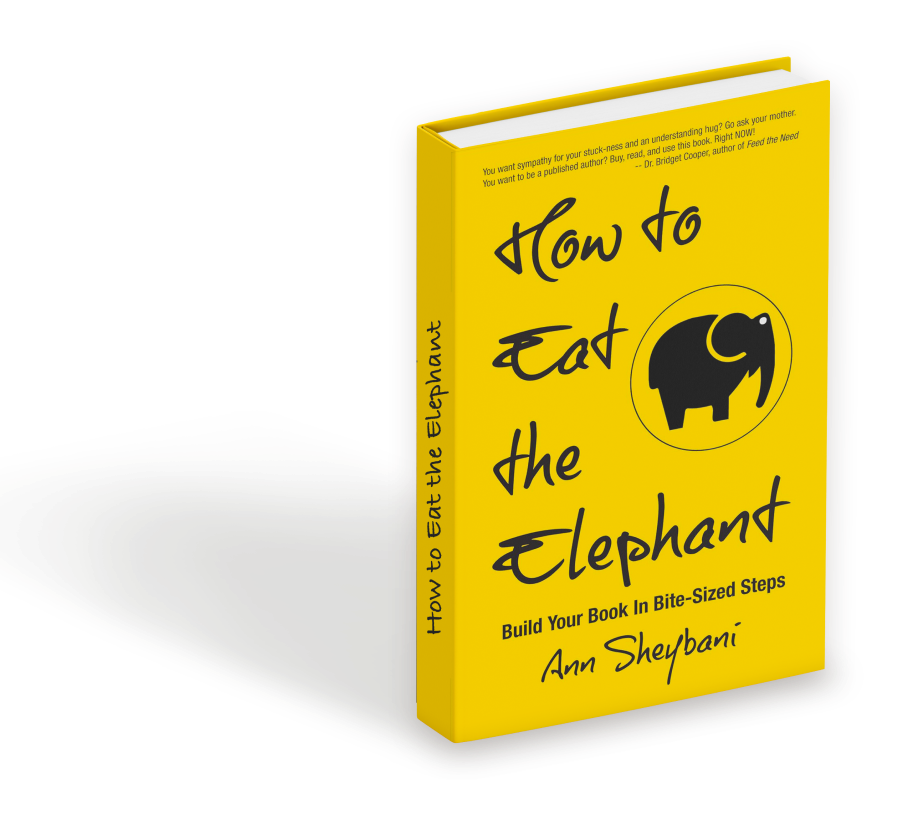I have a problem. This problem has gotten big enough that I’ve decided I need a solution. Oh, sure, I’ve been aware of this issue for a good long while, but recently I recognized that it’s costing me big time, so it’s taken on some urgency.
You see, I avoid conflict. I turn tail and run from anything that smells like a difficult conversation.
I’ve limped along with this impediment; ducked in behind a husband who, as a former criminal defense attorney, eats conflict for breakfast, lunch, and dinner. (If you want to know how conflict-friendly Walt is, go HERE)
But now that I’m managing a team, I’ve got to stop being such a weenie or I’ll wind up canning clueless individuals who can’t seem to do what I’ve asked them to do. (Next problem to conquer: How to delegate. But let’s not get ahead of ourselves.)
Like all reasonable people with an urgent problem, I headed on over to Amazon. There I plugged in the keyword term “Conflict Avoidant” and waited to see which books popped up.
After scrolling through the offerings, seeing which titles spoke to me, I chose three books to sample on my Kindle. (I could have stayed on the site and used the Look Inside feature, but I wanted to examine these options at my leisure. On the couch. Where no one could question or criticize me.)
I thought I would walk you through my analysis, how I chose which book I would buy and why. Because if you’re writing a book for your business, one designed to attract an ideal client with the very same problem you solve, and you’d like to differentiate yourself from other experts in your field, have I got some pointers for you.
Book #1: How to Have That Difficult Conversation: Gaining the Skills for Honest and Meaningful Communication by Henry Cloud and John Townsend
Great title. Because, hey, it’s those difficult conversations that I’ve been avoiding. (I’m not even going to tell you how I handle them now because you’d be embarrassed for me.) I need to learn how to do this.
I know the two authors well. In fact, their book Boundaries: When to Say Yes, How to Say No to Take Control of Your Life pretty much saved my bacon a decade or so ago. (I wrote about it HERE and HERE)
Oh, let me pause here and give you…
Pointer #1:
Don’t use terms your clients don’t understand or self-identify with. Like “boundaries”. You know they have boundary issues, but they may not.
Into the sample I went. Only to discover that the focus was more on personal relationships as opposed to business relationships. The client stories seemed to relate to marital and parental communication issues, which, by the way, I can TOTALLY relate to. But I’m more interested in the business angle. I need to have difficult conversations with team members and clients. Give me some specific examples of how to do that. That’s what I need right now.
(BTW, conflict avoidance and boundary issues are all wrapped up. If you have one, you tend to have the other. This was a great reminder for me.)
Which leads to….
Pointer #2:
Choose your angle. Choose one presenting problem, in one specific arena—business life, say, vs. personal life to write about. You may recognize that this issue you solve shows up in your target reader’s life in various ways, which you can acknowledge. But until you describe then dispatch with that presenting problem in that arena, don’t wander off into the others. Not right away, at least.
Related to this pointer…
Pointer #2a:
Choose one audience to speak to. You may realize your solution is useful to various audiences but you need to choose whom you’ll address. The stories you tell should speak directly to your target reader, to their challenges and experiences. Parents and teachers, for instance, may run into the same behavioral challenges you take on in your book, but the stakes and the options available to each are very different. You’ll only muddy the waters.
I moved on.
Book #2: Stop Avoiding Conflict: Learn to Address Disputes Before They Erupt by Patricia M. Porter, followed by a bunch of initials that mean nothing to me
OK, let me hit this up quick…
Pointer #3
Unless your target reader shares those initialed credentials or aspires to, for the most part, they mean next to nothing to someone looking to solve a problem
Again, great title. The word “Erupt” grabbed me. I worry that I’m going to wind up canning someone because I’ve let resentment build until I have no other choice. (I’d call that an eruption.) This is a bad habit, one that goes back a very long time.
Into the sample I go. The author seems to be addressing both conflict avoidance at home and at work. So, I read further to look for her primary focus. Only to discover that this book is poorly written. In fact, I couldn’t make it past the second page. If I were to guess at the problem, I’d say she took her workshop notes and tried to turn them into a book without doing the necessary work.
Pointer #3: You must write a well-structured book, or you’ll lose your reader before you have a chance to wow ‘em with your expertise. Game OVER.
Onward ho.
Book #3: The Coward’s Guide to Conflict: Empowering Solutions for Those Who Would Rather Run Than Fight by Tim Ursiny, Ph.D.
Again, I don’t need this cred, but I at least recognize what the letters stand for. (This coming from someone rather proud of her advanced degree.)
The title? Had me at hello because, first, I totally identify as a coward, so this makes me laugh. I know he’s going to be real with me because he’s dared to call me such a thing, and I really like that. Second, I know my natural Fight, Flight, or Freeze response when faced with a stressor. If I can run, baby, I will. This guy is talking to me.
Pointer #4 (Which is related to Pointer # 1):
Look for ways to speak to your target market’s problem without using labels. Break the issue down into recognizable attributes or habits. Instead of using a complex term, like co-dependent, pull out a symptom or related behavior that speaks to the problem as your reader experiences it. (10 Stupid Things Women Do to Mess up Their Lives is a primer for co-dependents if ever there was one. The woman who buys this book, however, recognizes that she has messed up her life, not that she is co-dependent.)
The other thing that I immediately liked about this book is its structure. The author has a nice mix of personal story—he reveals his own struggle with conflict, his own shame, which put me at ease—and client stories. He breaks concepts down, explains where the issue likely comes from without wandering too far down that path, then provides exercises so the reader can break down the most challenging perceived conflicts and come up with a better way of handling them. He also makes it very clear that he works one-on-one with clients and leads workshops, so, hello, I’ve got myself a resource if I want to go deeper and have more guidance.
Which leads to…
Pointer #5:
Let the reader know early on that you have other offerings; that you can provide further guidance. All it takes is a well-placed client story to plant that seed, which puts the reader at ease and gives them even more hope.
As you can probably guess, I bought this book. Not only is it useful to conflict avoidant fools, but it’s also a great example of a well-structured, expert-positioning book that solves a recognizable, urgent problem for a specific target market.




